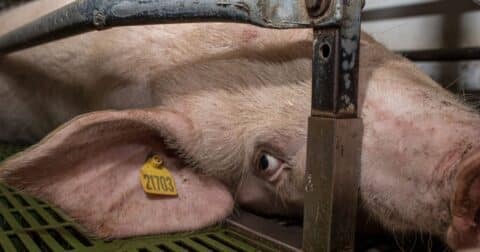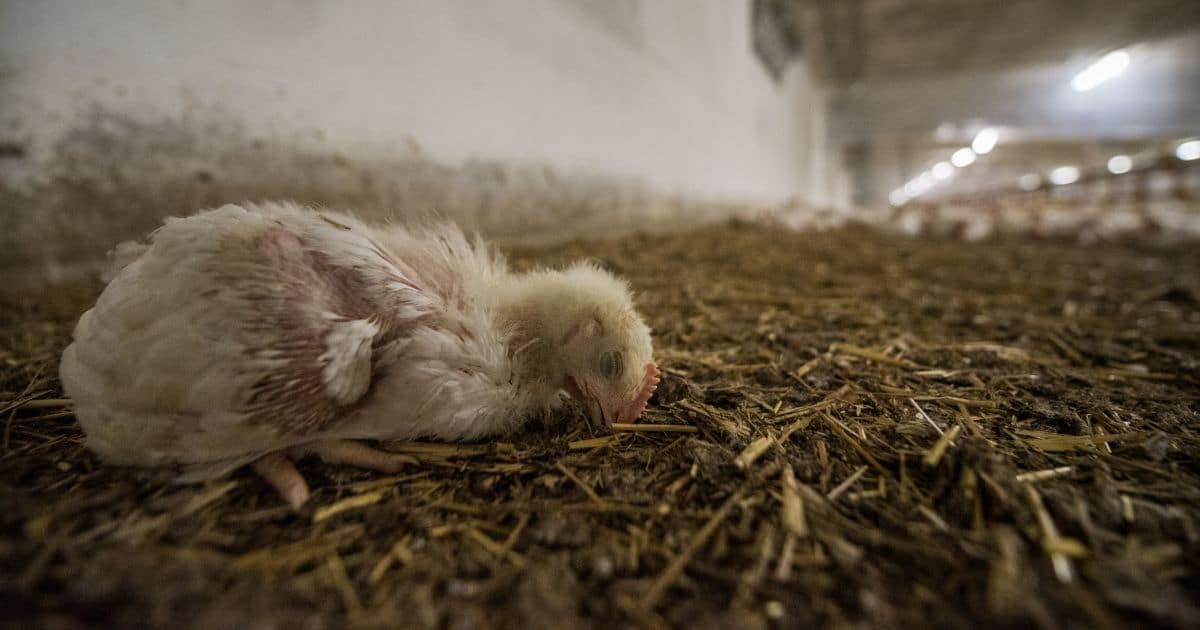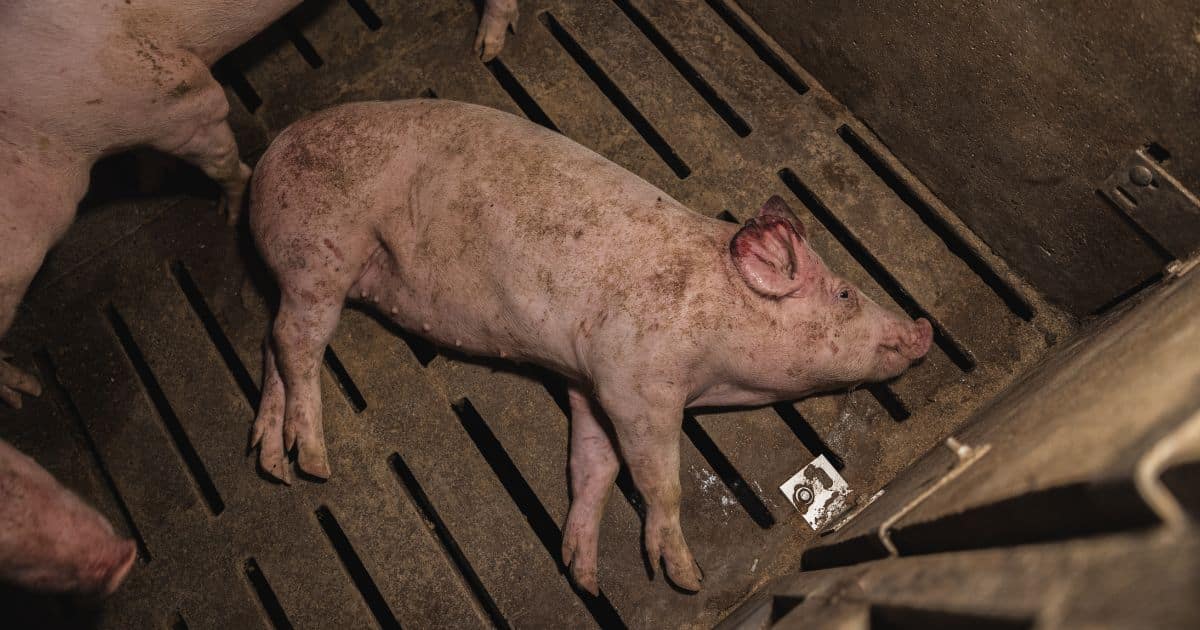News
Costco Chicken Processing Plant Keeps Failing Tests for Salmonella
Food•5 min read
Explainer
An astronomical number to comprehend, broken down.


Words by Seth Millstein
Every year, humans around the world eat 360 million metric tons of meat. That’s a lot of animals — or more precisely, a lot of dead animals. At any given point, there are 23 billion animals in factory farms, and countless more being farmed or caught in the sea. As a result, the number of animals killed for food every day is almost too large of a number to comprehend.
Before getting into the death toll, it’s worth remembering that animals suffer immensely in factory farms, and on the way to slaughterhouses, and in slaughterhouses. Around 99 percent of livestock are raised in factory farms, and factory farms prioritize efficiency and profitability over animal welfare. There are few laws protecting livestock from abuse and mistreatment on farms, and violators of those laws are rarely prosecuted.
The result is a significant amount of pain and misery for farmed animals, and that suffering is an important thing to keep in mind as we dive into the numbers behind these animals’ deaths.

Quantifying animal slaughter is relatively straightforward — except when it comes to fish and other aquatic life. There are two reasons for this.
First, the United Nations Food and Agriculture Organization (FAO), which tracks global livestock statistics, measures fish production in weight, not number of animals. Second, the FAO’s numbers only include farmed fish, not those caught in the wild.
To overcome the first challenge, researchers attempt to convert the total pounds of fish caught into the total number of fish themselves. Obviously, this is an inexact science that requires quite a bit of guesswork, and as such, estimates of fish slaughter tend to vary significantly, and are generally expressed in relatively wide ranges.
As for the second challenge, researchers Alison Mood and Phil Brooke have attempted to quantify the number of wild fish caught every year, first by pulling data from multiple sources and then by converting the total weight of wild fish to an estimated number of animals.
The following numbers are based on 2022 data from the FAO, except for the fish tallies: for farmed fish, the low end of the range draws on research by the Sentience Institute, while the high end is based on an analysis by Mood and Brooke. For wild-caught fish, the low end and high ends of the estimate are both based on a range provided by Mood and Brooke.
With that being said, here are the best estimates of how many animals are killed every day on a per-species basis.
In total, this means that every 24 hours, between 3.4 and 6.5 billion animals are killed for food. That comes to a lower-end estimate of 1.2 trillion animals killed every year. That’s a positively staggering number. For contrast, anthropologists estimate that the total number of human beings who’ve ever existed is just 117 billion.
A couple of things stand out about this data.
For one, if we exclude fish, the overwhelming majority of animals slaughtered for food are chickens. This isn’t a surprise, given that poultry consumption has skyrocketed over the last 60 years: between 1961 and 2022, the average person went from eating 2.86 kg of chicken every year to 16.96 kg — an increase of almost 600 percent.
The consumption of other meats didn’t rise nearly as much over that period. There was a modest increase in per-capita pork consumption, from 7.97 kg to 13.89 kg; for every other meat, consumption has remained relatively stagnant over the last 60 years.
Also notable is the relatively high death tolls of animals that many Americans might not think of as meat sources for humans. Slaughtering horses for meat is illegal in the U.S., but that doesn’t stop people around the world from killing 13,000 of them every day. Rabbit meat isn’t a common dish in America, but it’s wildly popular in China and the European Union.

One thing that’s particularly frustrating about all of this, from both an efficiency standpoint and an animal welfare standpoint, is that a sizable share of the animals killed for food are never even eaten.
A 2023 study published in Sustainable Production and Consumption found that 24 percent of livestock animals die prematurely at some point in the supply chain: they either die on the farm before they’re slaughtered, die in transit on their way to the slaughterhouse, die at a slaughterhouse but aren’t processed for food, or are thrown away by grocers, restaurants and consumers.
This wasted food adds up to about 18 billion animals a year. The meat from these animals never reaches the lips of any human, making their deaths — which, it should be stressed, are often excruciatingly painful and bloody — essentially pointless. What’s more, this tally doesn’t even include seafood; if it did, the amount of wasted meat would be many orders of magnitude higher.
In the U.S., around a quarter of animals in this category die on the farm from disease, injury or other causes. Another seven percent die in transit, and 13 percent are thrown away by grocers after being processed into meat.
Some of these “wasted deaths” are part and parcel of factory farm operations. Every year, around six billion male chicks are intentionally killed, or “culled,” on factory farms due to the fact that they can’t lay eggs. In the seafood industry, billions of aquatic animals are caught by accident every year — a phenomenon called bycatch — and are either killed or injured as a result.
It’s worth noting that these numbers vary significantly from country to country. The global average for wasted meat is around 2.4 animals per person per year, but in the U.S., it’s 7.1 animals per person — almost three times higher. On the other end of the spectrum is India, where only 0.4 animals per person are wasted every year.
The above death tolls only count animals who are farmed or caught with the goal of being eaten by humans. But the meat industry claims many other animal lives in more indirect ways.
For instance, cattle farming is the number one driver of deforestation around the world, and deforestation inadvertently kills a whole lot of animals that were never intended to be food in the first place. In the Amazon alone, 2,300 animals are at risk of extinction due to deforestation, as the clearing of trees wipes out their natural habitats and deprives them of the resources they need to survive.
Another example is water pollution. The manure from livestock farms often leaks into nearby waterways, and this can have a ripple effect that results in many more animal deaths: manure contains phosphorus and nitrogen, both of which promote the growth of algae; this eventually leads to harmful algal blooms, which deplete the oxygen in the water and clog the gills of fish, killing them.
All of this is a long way of saying that killing one animal for food often results in many other animals dying.
The astonishing number of animals killed for food every day, both directly and indirectly, is a sobering reminder of the impact our appetite for meat has on the world around us. From the animals slaughtered on farms to the creatures killed by agriculture-driven deforestation and farm pollution, the death toll that a meat-based diet demands is much higher and more far-reaching than many people realize.
This piece has been updated to correct 2,300 animals in the Amazon are at high risk of extinction, not only mammals, and that the total number of animals killed for food each day is between 3.4 and 6.5 billion, not trillion.